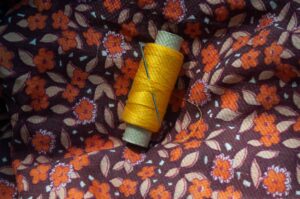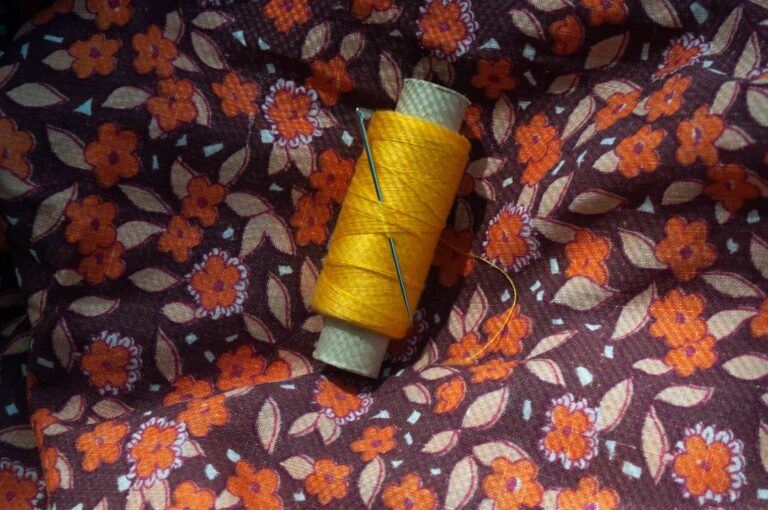Online thrift shopping has revolutionized the way consumers approach second-hand goods, offering a convenient and often more affordable alternative to traditional retail. At its core, online thrift shopping involves purchasing pre-owned items, typically clothing, accessories, and home goods, through various digital platforms. This practice not only promotes sustainability by extending the life cycle of products but also allows shoppers to discover unique pieces that may not be available in mainstream stores.
The appeal of online thrift shopping lies in its ability to combine the thrill of treasure hunting with the ease of browsing from the comfort of one’s home. The rise of e-commerce has led to a proliferation of online thrift stores, each with its own unique inventory and shopping experience. These platforms range from large, well-known retailers that specialize in second-hand goods to smaller, niche websites that focus on specific styles or categories.
Shoppers can find everything from vintage clothing to rare collectibles, making online thrift shopping an exciting venture for those who appreciate individuality and creativity in their wardrobe or home decor. Understanding the basics of this shopping method is essential for anyone looking to navigate the vast landscape of online thrift stores effectively.
Key Takeaways
- Online thrift shopping offers a convenient and affordable way to find unique and sustainable fashion items.
- Research and compare different online thrift stores to find the best selection, prices, and shipping options.
- Use search and filter options to narrow down your choices by size, brand, color, and price range.
- Understand how to measure clothing and compare it to your own measurements to ensure a good fit.
- Carefully evaluate the condition of items by checking for any flaws or damage before making a purchase.
Finding the Best Online Thrift Stores
Identifying the best online thrift stores requires a combination of research and personal preference. Some of the most popular platforms include ThredUp, Poshmark, and Depop, each offering a distinct shopping experience. ThredUp is known for its extensive inventory and rigorous quality control, making it a reliable choice for those seeking gently used clothing.
Poshmark, on the other hand, operates as a social marketplace where users can buy and sell items directly, fostering a community atmosphere that encourages interaction among fashion enthusiasts. Depop appeals to a younger demographic with its trendy and often vintage offerings, allowing users to curate their own shops and showcase their personal style. In addition to these well-known platforms, there are numerous smaller online thrift stores that cater to specific niches or demographics.
For instance, sites like The RealReal focus on luxury consignment, providing authenticated designer items at reduced prices. Other platforms may specialize in children’s clothing or eco-friendly products, appealing to shoppers with particular interests or values. Exploring various online thrift stores can lead to unexpected finds and help shoppers discover new favorites that align with their personal style and budget.
Navigating the Search and Filter Options

Once shoppers have identified their preferred online thrift stores, mastering the search and filter options becomes crucial for an efficient shopping experience. Most platforms offer a variety of search functionalities that allow users to narrow down their options based on specific criteria such as size, brand, color, and price range. Utilizing these filters can save time and enhance the likelihood of finding items that meet individual preferences.
For example, if a shopper is looking for a specific type of dress in a particular size and color, they can input these details into the search bar or use the filter options to refine their results. Additionally, many sites provide sorting features that allow users to view items by popularity, newest arrivals, or price, further streamlining the process. Familiarizing oneself with these tools not only makes the shopping experience more enjoyable but also increases the chances of uncovering hidden gems that might otherwise go unnoticed.
Understanding Sizing and Measurements
| Size | Measurements |
|---|---|
| Small | Waist: 28-30 inches, Chest: 34-36 inches |
| Medium | Waist: 31-33 inches, Chest: 38-40 inches |
| Large | Waist: 34-36 inches, Chest: 42-44 inches |
| X-Large | Waist: 37-39 inches, Chest: 46-48 inches |
One of the challenges of online thrift shopping is ensuring that items fit properly, as sizing can vary significantly between brands and even different styles within the same brand. Unlike traditional retail where shoppers can try on clothing before purchasing, online thrift shopping requires a more informed approach to sizing. To navigate this challenge effectively, it is essential for shoppers to understand how to interpret sizing charts and measurements provided by sellers.
Most online thrift stores will include detailed sizing information for each item, including measurements for bust, waist, hips, and inseam. Shoppers should take the time to compare these measurements against their own body dimensions to ensure a proper fit. Additionally, it can be helpful to familiarize oneself with common sizing discrepancies; for instance, vintage clothing often runs smaller than contemporary sizes due to changes in sizing standards over the decades.
By being proactive about understanding sizing and measurements, shoppers can minimize the risk of purchasing items that do not fit as expected.
Evaluating the Condition of Items
When shopping for second-hand goods online, evaluating the condition of items is paramount to making informed purchasing decisions. Each online thrift store typically provides a description of the item’s condition, which may include terms such as “like new,” “gently used,” or “vintage.” However, these terms can be subjective; therefore, it is crucial for shoppers to scrutinize any accompanying photos closely. High-quality images are essential in assessing an item’s condition.
Shoppers should look for clear pictures that showcase different angles of the item, highlighting any potential flaws such as stains, tears, or signs of wear. Some platforms allow users to zoom in on images for a closer look at details that may not be visible at first glance. Additionally, reading customer reviews can provide valuable insights into the quality and condition of items from specific sellers.
By taking the time to evaluate an item’s condition thoroughly, shoppers can avoid disappointment upon receiving their purchases.
Making Smart Purchasing Decisions

Aligning with Personal Style and Wardrobe Needs
One key aspect is assessing whether an item aligns with one’s personal style and wardrobe needs. Shoppers should ask themselves if they will genuinely wear or use an item before making a purchase rather than succumbing to impulse buying driven by low prices or trendy designs.
Considering Resale Value
Another important factor is considering the resale value of items. Some shoppers engage in thrifting not only for personal use but also as a means of investment or side income through reselling. Researching popular brands or styles that tend to retain value can inform purchasing decisions that may yield future returns.
Setting Budget Constraints
Additionally, being mindful of budget constraints is essential; setting a spending limit before browsing can help prevent overspending and encourage more thoughtful purchases.
Utilizing Coupons and Discounts
One of the advantages of online thrift shopping is the potential for significant savings through coupons and discounts. Many online thrift stores offer promotional codes or seasonal sales that can reduce prices even further. Shoppers should actively seek out these opportunities by subscribing to newsletters or following their favorite stores on social media platforms where promotions are often announced.
In addition to store-specific discounts, there are also websites dedicated to aggregating coupon codes for various retailers. Utilizing these resources can lead to additional savings on purchases made from multiple online thrift stores. It’s also worth noting that some platforms have loyalty programs that reward frequent shoppers with points or discounts on future purchases.
By taking advantage of these savings opportunities, shoppers can maximize their budget while indulging in their passion for thrifting.
Taking Advantage of Return Policies
Understanding return policies is crucial when engaging in online thrift shopping since it provides a safety net for buyers who may be uncertain about their purchases. Each online thrift store has its own return policy regarding how long customers have to return items and under what conditions returns are accepted. Familiarizing oneself with these policies before making a purchase can save time and frustration later on.
For instance, some stores may allow returns only if items are unworn and still have tags attached, while others may accept returns for any reason within a specified timeframe. Knowing these details enables shoppers to make informed decisions about their purchases and reduces anxiety about potential buyer’s remorse. In cases where returns are not accepted, it may be wise to consider whether an item is worth the investment based on its condition and fit before finalizing the purchase.
Building a Wishlist and Monitoring Items
Creating a wishlist is an effective strategy for avid online thrift shoppers who want to keep track of items they are interested in without committing to immediate purchases. Many online thrift platforms offer features that allow users to save items for later viewing or create personalized wishlists based on their preferences. This functionality not only helps organize potential purchases but also serves as a reminder for items that may sell out quickly.
Monitoring wishlist items can also lead to advantageous purchasing opportunities; some platforms notify users when prices drop or when similar items become available. This proactive approach allows shoppers to stay informed about their desired pieces while avoiding impulse buys on items that may not be as essential. By building a wishlist and actively monitoring it, shoppers can make more strategic decisions about when to buy based on price changes or availability.
Participating in Online Thrift Store Communities
Engaging with online thrift store communities can enhance the overall experience of thrifting by providing valuable insights and fostering connections with like-minded individuals. Many platforms have built-in social features that allow users to follow each other’s shops, share favorite finds, and exchange tips on thrifting strategies. Participating in these communities can lead to discovering new stores or sellers who align with one’s style preferences.
Additionally, social media platforms such as Instagram and Facebook host numerous groups dedicated to thrifting where members share their experiences, post about recent finds, and offer advice on navigating various online thrift stores. These communities often celebrate creativity and individuality in fashion while promoting sustainable practices through second-hand shopping. By actively participating in these groups, shoppers can gain inspiration and support from fellow thrifting enthusiasts.
Tips for Selling and Trading Items
For those looking to declutter their wardrobes or make some extra cash through thrifting, selling and trading items can be an excellent avenue to explore. Many online thrift platforms allow users not only to shop but also to list their own items for sale. To maximize success in selling pre-owned goods, it’s important to present items attractively through high-quality photos and detailed descriptions that highlight key features.
Pricing items competitively is another critical factor; researching similar listings can provide insight into appropriate pricing strategies based on condition and brand value. Additionally, engaging with potential buyers through prompt communication can foster trust and encourage sales. For those interested in trading rather than selling outright, many communities facilitate swaps where users can exchange items directly with one another—this not only refreshes one’s wardrobe but also promotes sustainability by keeping clothing in circulation longer.
By embracing these strategies within the realm of online thrift shopping—whether as a buyer or seller—individuals can cultivate a rewarding experience that aligns with their values while contributing positively to sustainable fashion practices.












